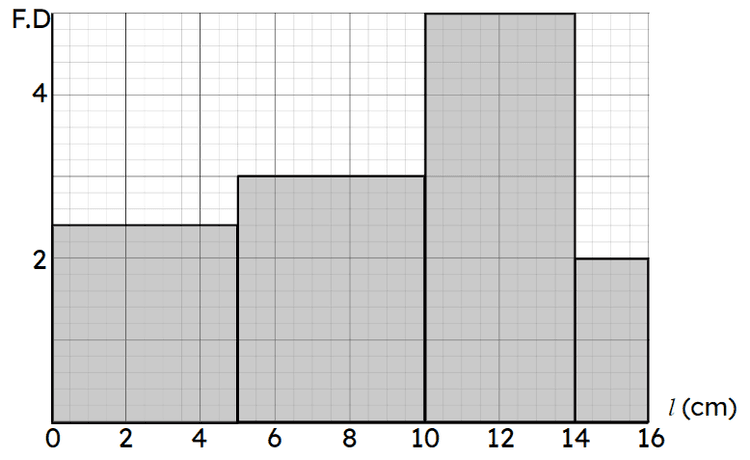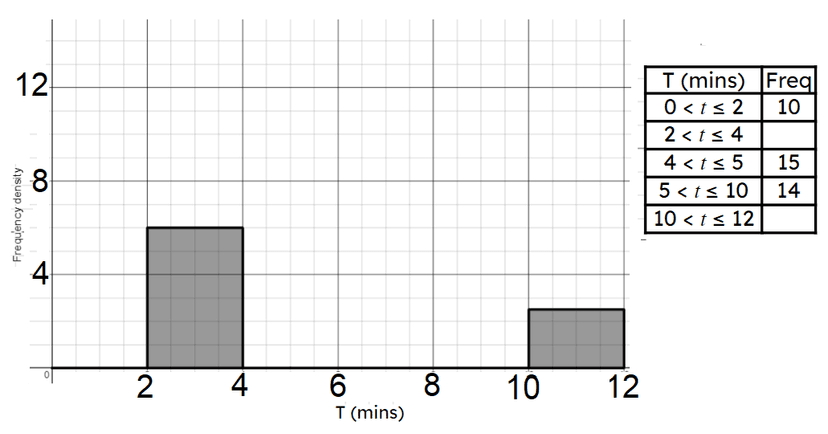Myths about teaching can hold you back


- Year 11•
- Higher


- Year 11•
- Higher
Summary statistics from histograms
I can estimate the mean and median from a histogram.
These resources were made for remote use during the pandemic, not classroom teaching.
Switch to our new teaching resources now - designed by teachers and leading subject experts, and tested in classrooms.
Lesson details
Key learning points
- The mean can be found using a histogram
- The median can be found using a histogram
- An estimate for the frequency within a given data range can be found
Keywords
Arithmetic mean - The (arithmetic) mean for a set of numerical data is the sum of the values divided by the number of values. It is a measure of central tendency representing the average of the values.
Frequency density - Frequency density is proportional to the frequency per unit for the data in each class. Often, the multiplier is 1 meaning that frequency density = frequency ÷ class width.
Histogram - A histogram is a diagram consisting of rectangles whose area is proportional to the frequency in each class and whose width is equal to the class interval.
Common misconception
Histograms with unequal bar widths are plotted against the frequency and/or pupils read the frequency density as the frequency of the class width.
Show what a histogram with unequal bar widths looks like when plotted against frequency. This visual aid will show pupils the distribution of data is difficult to see.
To help you plan your year 11 maths lesson on: Summary statistics from histograms, download all teaching resources for free and adapt to suit your pupils' needs...
To help you plan your year 11 maths lesson on: Summary statistics from histograms, download all teaching resources for free and adapt to suit your pupils' needs.
The starter quiz will activate and check your pupils' prior knowledge, with versions available both with and without answers in PDF format.
We use learning cycles to break down learning into key concepts or ideas linked to the learning outcome. Each learning cycle features explanations with checks for understanding and practice tasks with feedback. All of this is found in our slide decks, ready for you to download and edit. The practice tasks are also available as printable worksheets and some lessons have additional materials with extra material you might need for teaching the lesson.
The assessment exit quiz will test your pupils' understanding of the key learning points.
Our video is a tool for planning, showing how other teachers might teach the lesson, offering helpful tips, modelled explanations and inspiration for your own delivery in the classroom. Plus, you can set it as homework or revision for pupils and keep their learning on track by sharing an online pupil version of this lesson.
Explore more key stage 4 maths lessons from the Graphical representations of data: cumulative frequency and histograms unit, dive into the full secondary maths curriculum, or learn more about lesson planning.

Licence
Prior knowledge starter quiz
6 Questions
Q1.A __________ is a diagram consisting of rectangles whose area is proportional to the frequency in each class and whose width is equal to the class interval.
Q2.Here are the times taken to type the alphabet. Which of the following has a frequency density of 1.6?

Q3.Here is some data on the lengths of some parcels. Which of the following have a frequency more than 13?

Q4.Here is a histogram showing lengths of different fruit. $$x$$, $$y$$ and $$z$$ are what values?

Q5.Here are the times taken to type the alphabet. Which of the following has a frequency greater than 10?

Q6.Here is a histogram showing the time it takes to solve a puzzle. What is the total frequency?

Assessment exit quiz
6 Questions
Q1.The (arithmetic) __________ for a set of numerical data is the sum of the values divided by the number of values. It is a measure of central tendency representing the average of the values.
Q2.Histograms are excellent visual aids to show the distribution of data, but using the estimate mean from a histogram has more benefits. Select the appropriate reason.
Q3.Here are some times it takes for Oak class A to type the alphabet. Using the table, work out the estimate mean. There is no need to include the units.

Q4.Here are some times it takes for Oak class B to type the alphabet. Using the table, work out the estimate mean. There is no need to include the units.

Q5.The estimate mean for Oak class A was 16.85 seconds and the estimate mean for Oak class B was 13.75 seconds. What does this mean?
Q6.Work out the estimate median using this histogram showing lengths of pieces of wood. There is no need to include the units.


